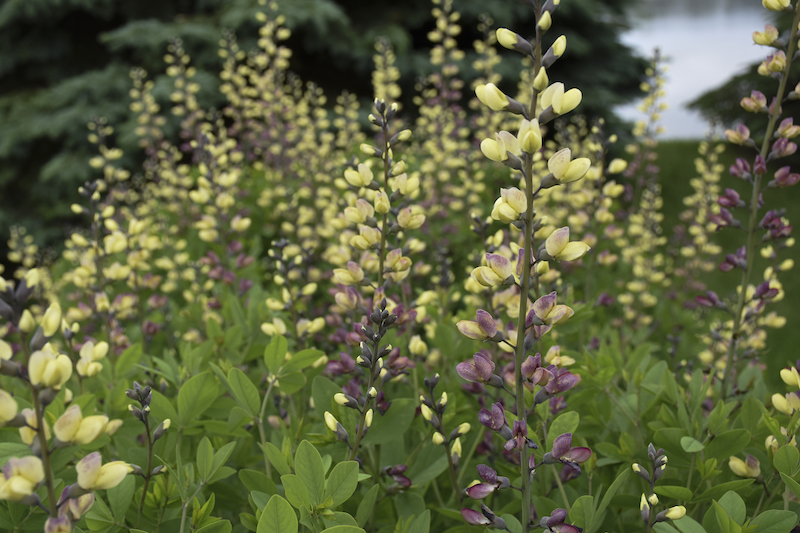False Indigo would do well in a pot, although it is not recommended due to the large taproot that the plant produces and the fact the plant does not like to have its root system disturbed. If container growing is desired, it is best done in early spring when the plant is dormant. Plant False Indigo in a large pot with good drainage in average soil and place it in a location with full sun. It is recommended that False Indigo not be fertilized.

Planting False Indigo in Pots
False Indigo may be planted in pots in early spring. As they prefer full sun, place them in an area where they will receive as much sun as possible. The planter should be at least 2 to 3 times larger than the pot the plant came in originally and have a minimum of 3 drainage holes. False Indigo roots do not like to be wet or soggy. The best material for the planters would be terracotta, ceramic or concrete, which will help to minimize water issues and keep the plant from falling over in high winds.
Best Soil For False Indigo in Pots
False Indigo would prefer a potting soil that is light, friable, and not heavily fertilized, as they are not lovers of overly rich soils. If desired, compost may be mixed into the potting soil to supply additional nutrients to the plant. Make sure that the potting soil drains well, and that the pot used has ample drainage so the roots do not become soggy. A light coating of mulch or compost may be used on the surface of the soil to help minimize moisture loss.
Caring For False Indigo in Planters
False Indigo will grow well in planters, although it is not an ideal environment for them. As they grow, they develop a long taproot whose growth may be impeded by the size restrictions of the pot or planter. To be successful, these plants require a large container (>18-inch diameter), nutrient-rich but not overly fertile soil, ample drainage, and a full sun location. False Indigo would not be a good candidate for growing in a hanging basket as their growth habit is vertical and not trailing.

Watering False Indigo in Pots
False Indigo grown in pots should be well watered every 2 to 3 days, depending on the pot’s location and weather conditions. Watering should be done until it runs out of the base of the planter. Supplemental rain from storms may help keep the plant watered, but in periods of drought, moisture conditions of the container would need to be monitored. A general rule is to water the plant 2 to 3 times a week, more frequently in drier weather.
Fertilizing False Indigo in Pots
As False Indigo fix their own nitrogen in the soil, they do not require addition of artificial fertilizers to the soil. In fact, fertilizing may impede their growth, producing more foliage than blooms. This holds true for both potted plants and those grown in the ground. Baptisia does best in average soil, but an addition of compost would be beneficial to both plants grown in the ground or in pots.
Winter Care For False Indigo in Pots
False Indigo grown in a pot would be best overwintered in a cold, but above-freezing location until it can be moved back outside in spring. At the lower end of its growing range, the pot may not be left outside, as the plant would not likely survive the winter in the pot. The plant may be removed from the pot, planted in the ground for the winter and repotted in the spring. The empty pot or container should be moved indoors for the winter.
Growing False Indigo Indoors
False Indigo would not make a good houseplant, as it requires a freezing and dormant period in order to produce blooms the following season. The plant needs this dormant period to store energy for the next cycle of growth. Any additional moisture should be withheld until the plant shows signs of active growth in late winter or early spring.
 |
Author Chris Link - Published 08-23-2022 |
